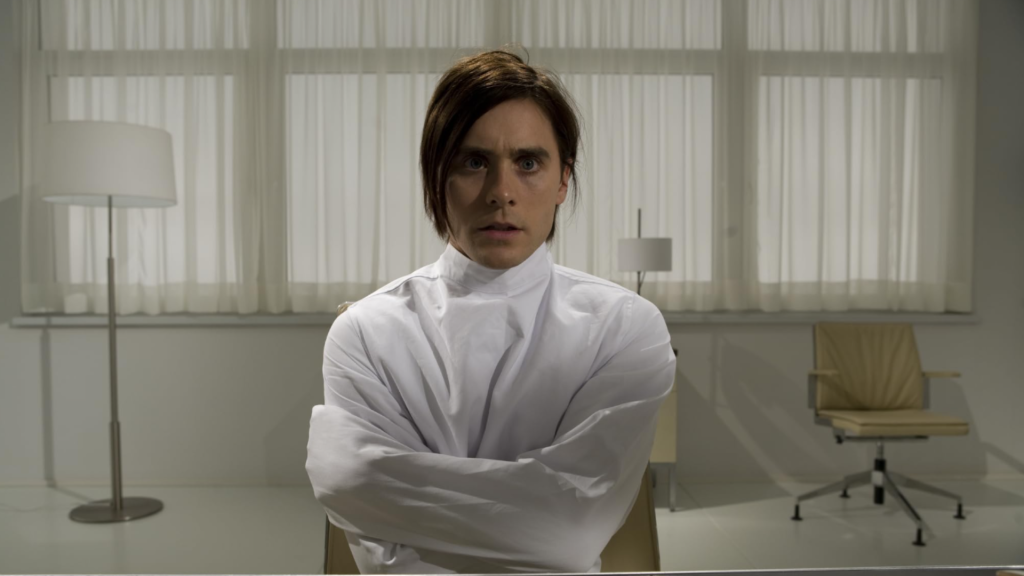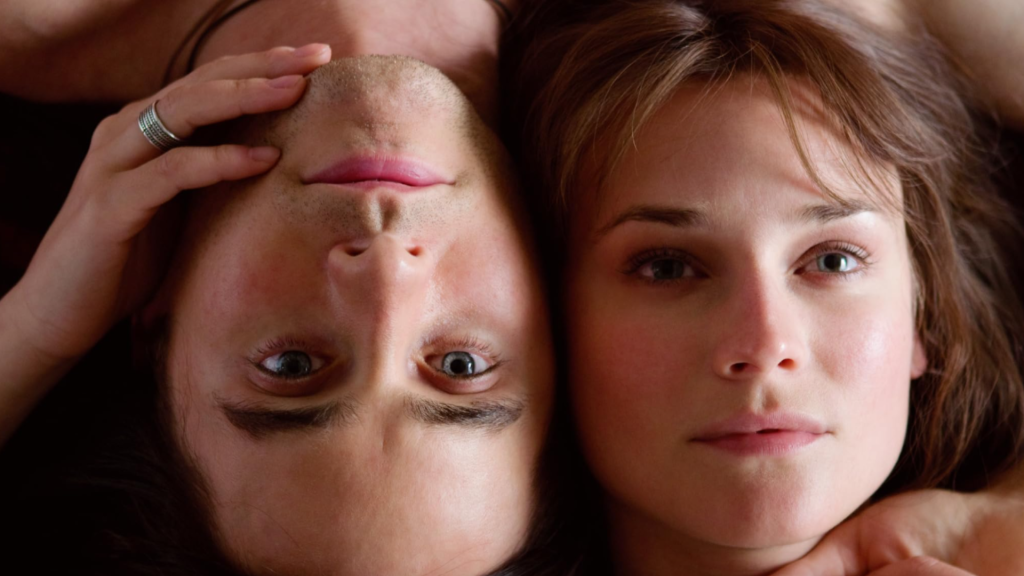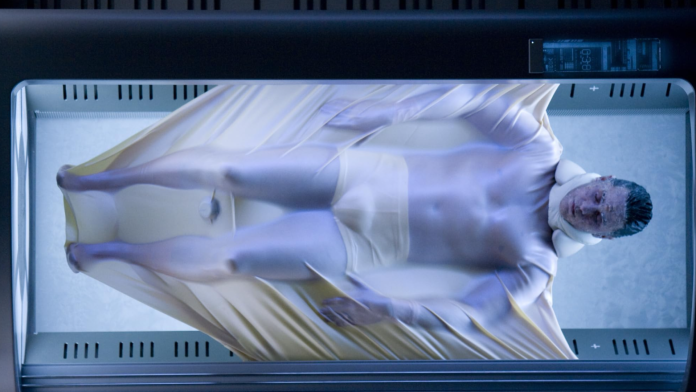I was in grade school when Mr. Nobody (2009) was being filmed. A friend of mine, whose parents were in production, was cast as the child lead’s double, and my classroom soon got involved. We went to the production studio, shot a scene that did not make the final cut, and were each paid the modicum sum of $25 Euros, cash. Years later, watching the movie for the first time, I would recognize the film’s décor as the Floreal, the social housing belt that cinches Brussels–only streets away from where I grew up. I would learn that the movie held Belgium’s movie-budget record. I would also learn that it was its director’s biggest commercial flop; and I would fall in love. Over the years, that love has been questioned by those I have shown the film to, explained away as nostalgia, but that’s not it. Jaco Van Dormael’s movie is a masterpiece, but its complexity–likened to a labyrinth by its director–does not lend itself to a post-Tiktok world.
The movie in question is set in 2092 where, at age 118, Mr. Nobody (Jared Leto) is the last mortal on Earth. Prodded by his doctor and, later, by a journalist, he tries to remember his past, but his memories are confused. Did he go to Canada with his mother (Natasha Little) or stay in England with his father (Rhys Ifans)? Was he a businessman, a pool cleaner, or a TV presenter? Who did he really marry? “I don’t understand”, the reporter says at one point, all but scratching his head. “Everything you say is contradictory.” And so it is. But therein lies part of the film’s brilliance.

Jaco Van Dormael’s Mr. Nobody is a movie about choices and fate. A film about the road less travelled by, the road more travelled by, and the road not travelled at all; a study of the ‘what ifs’ of our lives; a commentary about life’s unpredictability; and an ode to childhood and love. In its sprawling scope, viewers are encouraged to choose for themselves who Nemo Nobody is and what the movie is about.
For its ostentatious disorder, Mr. Nobody is exquisitely detailed. It provides viewers with visual and musical cues that serve to differentiate Nemo Nobody’s lives. As a child, colours coexist, but as Nemo enters adolescence, they whittle away. In one life thread, his surroundings and very identity–from the light at the club to the watch he wears–become tinged with yellow. In another, blue takes over: the flowers at his wedding are blue; the walls of his house are blue; the clothes his wife wears are blue. In a third, red dominates. By 2092, colours have given way to a monochrome landscape. This visual lipogram is a powerful reminder about the impact choices have on one’s life.
This visual-blazing does not limit itself to colour. Each of Nemo’s lives is filmed to reflect his inner life. In one of them, the camera is shakier, handheld. In another, Nemo is viewed only from a distance. In a third, close ups feature prominently. Beyond allowing viewers to follow the story, they contribute to reflecting Nemo’s state of mind. When we are shown a fast-motion shot of the hairs on Nemo’s arm raising, no words are needed: we know exactly how he feels.

This visual way-marking is paired with Pierre Van Dormael’s unforgettable soundtrack, like a good bottle of wine is to cheese. The director’s brother, who sadly died a year before the movie’s release, defies cinematic conventions by drawing upon a wide array of music genres. Works by Eurythmics, Erik Satie, Pixies and Gabriel Fauré feature alongside his own compositions, always matching the scene they accompany perfectly. Pierre’s compositions in particular return again and again, leitmotifs subtly evolving as the story progresses. Like milestones, they tell the viewer how far they have travelled from Mr. Nobody’s childhood.
Of course, none of these meshed-together Ariadne threads would matter if the film’s actors were bad, but they are anything but. Tony Regbo and Juno Temple, who play Nemo and Anna as teenagers, particularly stand out in their ability to bring adolescence, with its irrationality and impulsiveness, to life. Sarah Polley and Rhys Ifans give equally gripping performances that illustrate what depression and unhappiness are like. Even Jared Leto, whose lack of range I often deride, fits his character.
To its detractors, Mr. Nobody is an unwatchable movie. It is hard to follow. Questions go unanswered. It has no neat ending–and they have a point. However, I firmly believe in the age-old idea that, sometimes, complexity is not such a bad thing. If you give Mr. Nobody the time it deserves and approach it knowing that it is not your run-of-the-mill linear story, you might come to appreciate its story, its discography, its aesthetic. And you might come out the other end having discovered one of the cinematic world’s hidden gems.
Words by Elkyn Ernst
Support the Indiependent
We’re trying to raise £200 a month to help cover our operational costs. This includes our ‘Writer of the month’ awards, where we recognise the amazing work produced by our contributor team. If you’ve enjoyed reading our site, we’d really appreciate it if you could donate to The Indiependent. Whether you can give £1 or £10, you’d be making a huge difference to our small team.
